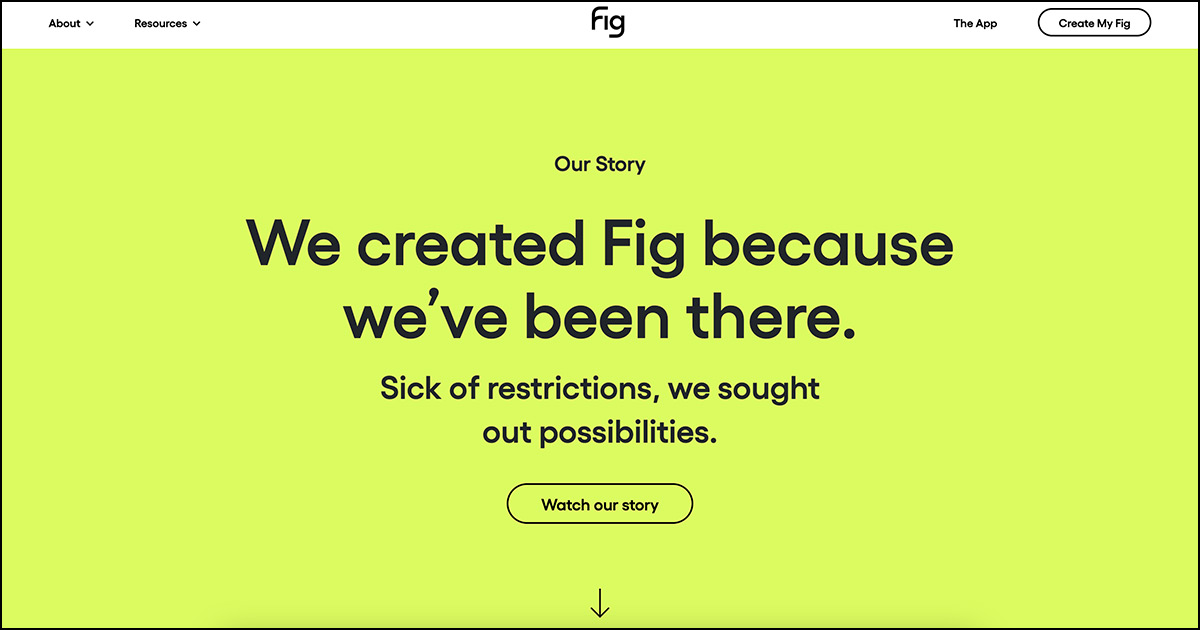Helping Those With Food Allergies Eat Safely
The Origin Story of Fig

Last Updated: By TRUiC Team
Millions of people around the world live with special dietary needs such as food allergies, many of which can cause serious illnesses. Depending on what someone is allergic to and how widespread those ingredients are, it can be extremely challenging to find safe food to eat. Fig, a startup co-founded by Andrew Hollar and Max Rebarber, offers an app that’s powered by a database of thousands of foods and ingredients. The app can tell someone exactly what a given food contains so they can make safer choices.
This is Fig’s origin story.
A Worldwide Problem
Max says about 60% of the world’s population has food allergies or other special dietary needs. And yet, doctors and other medical professionals often don’t really know how to help these people.
“The way that doctors and healthcare ultimately recommend for individuals to learn a new diet today is really just a sheet of paper,” he says. “So if you are diagnosed with celiac or have a GI disease, a doctor might hand you a list of 500 ingredients to avoid, and the patients often left on their own to figure out what their life is or how to navigate food with that paper. And that's just such a backwards experience that we felt pretty passionately [that] technology could streamline and improve for the patient and just their overall life.”
Both Max and Andrew have a personal stake in this issue. “I went to Mexico in 2014 [and] got really, really sick,” Max says. “For three years, [I] saw more than 20 doctors trying to figure out what in the heck was going on with me. I finally found my answer through food in 2017 when I flew to Chicago to see an alternative medicine doctor, and he was the first one that ever got me on this notion that food might be causing your symptoms.”
Andrew also has to watch what he eats because he lives with irritable bowel syndrome. “Eating the wrong thing whenever you're trying to follow a restrictive diet, like low-FODMAP for IBS, means you can get really, really sick,” he says. “For me, it can mean three or four days of a lot of pain.”
How Fig Can Help
Fig’s mission is to help people make safer choices and avoid getting sick by letting them know exactly what’s in something before they consume it. “Fig is really a technology that's changing the way that food and health are perceived in the world,” Max says.
To use Fig, you sign up for an account and enter information about your dietary restrictions. That information is permanently stored and connected “to everywhere that food is,” Max says. “So if you're shopping for groceries, browsing for recipes, or ordering from DoorDash, really just finding food in the real world, Fig will just very simply and clearly show you, is a food green? Good for you. Is it red? Bad for you, and actually explain why. So Fig is reading the ingredients in real time and telling you what's in that food that you might not be able to have, and educating you as to why that's the case from a team of dieticians who've kind of built up the platform over the past two years. So… that's what Fig is and where we got started from.”
Avoiding illness is one thing, but choosing foods that help you thrive is even better. Max and Andrew want to help people do that, too. “Probably the number one request that we get from our members now is, what should I actually eat to feel my best?” he says. “So we know that people need help before they get to that moment of, ‘Okay, I'm going to customize what I'm getting at the grocery store.’ And that is in the future roadmap to actually build out tech to help you Figure out personally what types of foods are going to help you fill your best, which ones are going to be most aligned with your unique dietary needs.”
What's Next for Fig
Max and Andrew have big plans for the company, starting with international expansion. “Dietary restrictions are not an American problem – they are global,” Andrew says. “We've got requests really from every single country in the world, and we maintain a [waiting] list. We're looking at expanding now to English-speaking countries, likely the United Kingdom, Canada, Australia, and New Zealand. So that'll be coming in early 2023.”
The company also plans to “focus on user-generated content and annotation around foods,” he says. “It's this notion that if you have 20,000 celiacs on the platform and they've had certain experiences with XYZ food product, how can we structure their experiences in a responsible way and deliver information back to that celiac community?”
In addition, Andrew says Fig wants to focus more on restaurants, where it can be extremely difficult for someone with food allergies to know exactly what they’re eating. “Restaurants are often what I call the final frontier of dietary restrictions,” he says. “At least with a food product from a grocery store, there is an ingredient list and an allergen list, which you can generally trust… But with restaurants, you never quite know what you're getting.”
Fig has introduced a feature in beta that deals with chain restaurants because they often use standardized recipes. Independent restaurants are a different story. “We're thinking about how might we leverage the demand for food… to potentially influence how we might be able to work with mom-and-pop restaurants or with other chain restaurants to deliver those eating out experiences that people with dietary restrictions desperately want,” Andrew says.
Finally, Fig wants to help people share information. “One of the hardest things when you live with dietary restrictions is isolation,” he says. “It's feeling like you are alone and that no one else understands what you're going through. You don't really know what life of dietary restrictions is like until they hit you. And then you realize that you eat three times a day and you have to start thinking about where your food's coming from three times a day, every day, 24/7. It's an exhausting challenge, and it's very isolating.”





